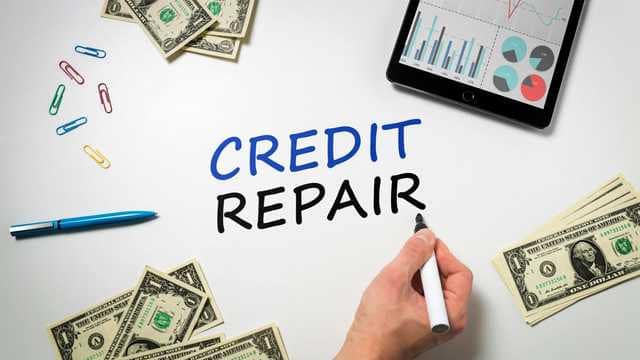Rewrite this article: When we talk about investing, the first thing that comes to mind is the risk associated with the instrument and the second is the return it will produce over a time horizon. In this in-depth guide, we cover all of these aspects of investing. Before making an investment decision, you must determine what type of investor you are, this will prevent you from making bad investment decisions and possible monetary losses. As I said, what type of investor are you in the sense that depending on your current financial situation, financial health and age, you have to consider your risk profile. This will make your investment journey easier. I already explained how to determine your risk profile in a blog post What it means for an ideal financial portfolio. Let me clarify some things, in general, for any type of investment, there is some risk associated with it. Even if you put your money in the FD bank and the bank goes bankrupt, what will happen to your money? From the financial year 2020-21, in the event of bank failure or bankruptcy, each bank depositor is insured (Deposit Insurance and Credit Guarantee Corporation Act, 1961′ (DICGC Act) until ‘to a maximum of rupees five lakh for both principal and the amount of interest he holds.This is for your information. Most investments do not have a guaranteed rate of return. Indeed, when you invest, you take a certain level of risk. Each type of investment will have different types of risk. Now back to the topic, what are the risks associated with any kind of investment opportunities currently available in the market? In general, we can categorize risk for any type of investment and I will discuss in detail all of these categorized risks for any underlying asset or investment. The main risks associated with any investment are as follows (mainly for mutual funds):- Market risk or systematic risk (mainly for market-linked investments) Diversifiable risk or unsystematic risk Liquidity risk Capital risk Inflation risk Credit risk Market risk or systematic risk (mainly for market-linked investments) When you invest in the stock market, you simply take on the market risk. You cannot avoid this risk because it is beyond your control and affects a large number of assets. Any new law or regulatory passage by the government that causes losses to your investment is systematic risk. One way to overcome market risk is to stay invested for a long time. Diversifiable risk or unsystematic risk Unsystematic risk affects very few assets or none in particular. This risk can be reduced by diversifying your investment. Diversifying your investment can significantly reduce the risk of unsystematic risk. An American investor and business tycoon, Warren Buffet, once said “Never put all your eggs in one basket”. You must understand the underlying asset of your investment product or financial instrument in which you are going to invest. Take, for example, the example of investment in mutual funds, which already covers this type of risk itself. Mutual fund Also invest in various assets, such as bonds, cash or commodities such as gold and other precious metals. Also, there are different types of mutual funds available in the markets, such as stocks, bonds, and balanced funds. This gives you the flexibility to invest in various assets at the same time to reduce your risk exposure. This diversification allow investors to reduce the risk of a particular security or sector. Liquidity risk This is a situation where you are unable to sell and raise funds from your investment when needed. Liquidity refers to a market condition where both buyer and seller are available at all times and you can sell an asset easily. If there is not enough liquidity in the market, you cannot sell an asset at the desired time. To avoid this kind of risk, check the size of the fund and the age of the fund before investing in a mutual fund. More details are provided in the last part of this UCITS Investment Guide. Capital risk Capital risk is the possibility of losing some or all of the capital invested. Capital risk can be market risk where the price of an asset moves adversely. Inflation risk It refers to the risk that your investment and cash flow will significantly reduce your purchasing power due to inflation. The best way to fight inflation is to invest in a financial instrument that offers you a return that exceeds inflation over a long period. Normally, with a mutual fund investment, you can expect a very good return that beats inflation by a wide margin. Because the investment and performance of mutual funds are directly linked to the market. Credit risk: Credit risk mainly relates to bonds and debt securities. Usually when the bonds mature, the company or institution will pay the promised principal and any interest they owe. But for some time the business did not perform well and was unable to pay as promised. Generally, government bonds have the least credit or default risk, while bonds have been underwritten by companies with higher credit risk but also offering a higher interest rate. There is a credit scoring organization that can help you find a good scoring tool online. There is also another type of risk that can affect the valuation of your investment, such as business risk, currency risk, interest rate risk, management risk, regulatory or legislative risk, and political risk. /country. The FCP already covers all these types of risk by diversifying your investment. The best part of investing in mutual funds is diversifying your invested amount. You invest a small amount in a particular mutual fund, but your money is invested in many companies by mutual funds, which greatly reduces the risk associated with your investment. Overall, you should diversify your investments where possible to reduce your level of unsystematic risk. However, keep in mind that systematic risk is not in our control and depends on the economy. You need to figure out where you want to invest your hard-earned money and determine what appropriate asset allocation is right for you based on your age, risk tolerance and time horizon. If you do this, you will be well on your way to creating a strong financial future. When you invest, you are exposed to a combination of these risks depending on the type of your investment. Being aware of the risks associated with an investment and weighing the potential returns against the potential risk is important when making an investment decision. You can check the fund rating and risk scale of each fund online on different portals. The CRISIL rating indicates the historical performance of the fund compared to other funds in the category. Here I am attaching a screenshot.
Source link







